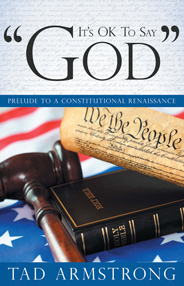5 Oct 2011
Death Penalty Jurisprudence is Killing the Constitution
© St. Louis Post-Dispatch
Tad Armstrong
“Hit a worker, $10,000 fine, 14 years in jail.” Illinois drivers are familiar with these work zone signs. Here is an example where educating the public to the promise of harsh penalties has altered old driving habits. I mean, no one sets out to hit a worker, but “14 years” says “slow down” so much better than “slow down,” doesn’t it?
The death penalty is in the news again. I do not believe its threat deters those who premeditate murder nor those who, while not setting out to kill, carry a weapon to a crime scene prepared to kill if their plan doesn’t go quite as expected. These hard-core criminals don’t likely stop to think whether their crime will take place in a death penalty state, for they have as little regard for their own life as they do for the lives of their victims.
At any rate, the threat of punishment has no chance of deterring crime unless (1) the consequences of crime are effectively communicated in time to deter and (2) punishment after conviction occurs relatively soon.
Are there other types of would-be criminals who might be deterred by a sign like the following posted in high crime areas? “Attention get-away drivers: If your partner-in-crime kills a cashier, this state will kill you.” I contend those who contemplate aiding robbers for a share of the take might think twice before putting their lives in the hands of their pals. Why not educate potential criminals at least as visibly as drivers in a work zone?
I suppose the short answer is that it makes too much sense. But, alas, it is too late for my experiment in deterrence, for in the 1982 case of Enmund v. Florida, the Supreme Court (in a five to four decision) held that, although a get-away driver planned a robbery, he could not be put to death since it was his accomplice who pulled the trigger killing an elderly farm couple, thus overturning nearly 200 years of established precedent known as the felony-murder rule. Speaking for the majority, Justice Byron White was unconvinced that the threat of execution would “measurably deter one who does not kill and has no intention or purpose that life will be taken.” I wholeheartedly disagree, but more importantly, the people of the sovereign state of Florida had the constitutional right to make that call for themselves.
“Compassionate” liberals have just completed another round of collective hand-wringing over the possibility that the death penalty may have been carried out on an innocent man. Although I am not aware of a documented case of executing the innocent, I am sure it has occurred, just as I am sure it will occur again if this form of punishment survives. Yet, I am not cavalier about the gravity of such a gross miscarriage of justice.
As a policy matter, I have a hard time justifying the taking of life by the state until I come across a case so heinous that it cries out for the ultimate penalty. The only thing that prevented the execution of Patrick Kennedy for the 1998 brutal rape of his eight-year-old stepdaughter was a physician who saved her life. In 2008, five Supreme Court justices (in Kennedy v. Louisiana) told the people of the sovereign state of Louisiana that “they” had a better handle on decency than “them,” for regardless of the degree of brutality, they held the death penalty unconstitutional unless a life is taken by the perpetrator. Anyone care to challenge the idea that this young child’s life was not “taken”? The policy debate will always be with us, but I am nevertheless confident of two conclusions.
First, whether or not the death penalty survives on policy grounds, the potential of executing the innocent is no justification for its elimination. I am convinced that far more deaths of innocent prison guards, inmates and victims of escapees are caused at the hands of previously convicted killers who were spared the death penalty. Difficult as it is to take the risk of executing the innocent, in balance, my compassion lies with those victims.
Second, for the most part, the determination of whether this form of punishment is a “decent” response to heinous crime lies with the collective conscience of the citizens of each state as represented by their elected leaders. Four of our Supreme Court justices acknowledge they are no better fit to make that determination than the democratically elected representatives and jurors of each state. Four apparently believe they are more “decent” than the rest of us. That leaves one unelected lifetime appointee holding the keys to whether you are governed by the consent of “We, the people” or his own brand of “decency.”

Comments










